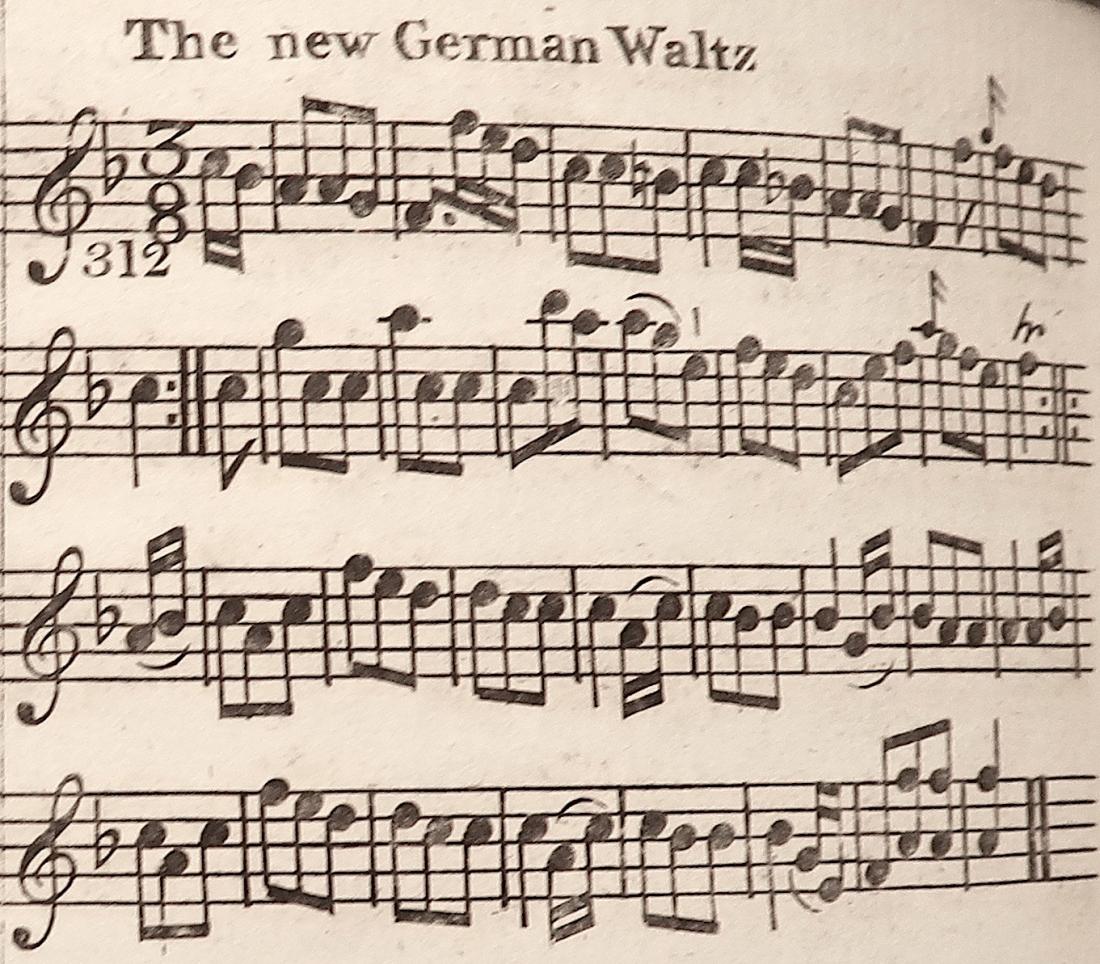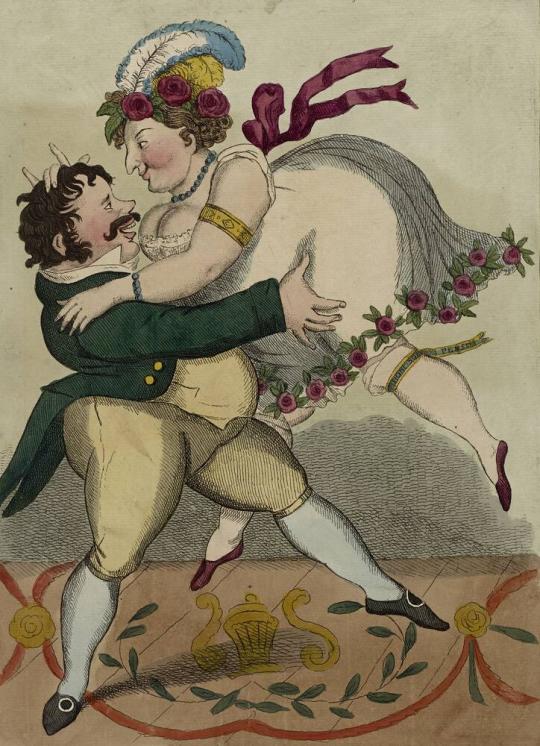
Preston’s 24 Country Dances for the Year 1797 – The New German Waltz
Preston’s Twenty Four Country Dances for the Year 1797 with Proper Tunes and Directions to each Dance as they are Performed at Court, Bath, and all Public Assemblys (London: Preston & Son, [1797])
-
The New German Waltz
Image courtesy of the British Library Board, Music Collections a.252.(6.) , p. 136
To download mp3 files either click on the three dots or right-click on the player and choose the save/download option.
Recording Details:
Wiebke Thormählen - violin
Recorded in the Music Room (Entrance Hall), Erddig, 31 January 2020
The New German Waltz appeared in several English country dance collections in the late 1790s. Its inclusion is likely indicative of the growing popularity of the waltz in Europe and the increasing publication of waltz music in England, which sometimes bore the title “German” waltz in a nod to the dance’s origins. The fusion of standard country dance steps with waltz music potentially appealed to a broader audience, allowing dancers to perform to waltz music without risking the connotations of immoral conduct that were attached to the waltz itself. By 1816, dancing master Thomas Wilson declared a “new species of Waltzing” which drew upon precisely this point: “To render this species of Music more useful to the dancer & more general in its application than waltzes now published are, the Author has set to them a few figures entirely adapted to that new & elegant system of dancing called Country dance Waltzing or Waltz Country dancing” (Wilson 1816, 143). Unlike Preston’s publication, Wilson’s figures included specific references to dance certain steps “a-la waltz”.
The New German Waltz also circulated in manuscript and printed music publications. It appears in manuscript tune books such as those belonging to John Keech, the collection of Charles Bridgeman, and also Sally Shilton, the daughter of a local worker who was educated by Sir Roger and Lady Hester Newdigate at Arbury Hall with the view to becoming a professional singer (Newdigate-Newdegate 1898). A printed version of the tune was produced by Sophia Dussek, a singer, pianist and harpist who arranged a number of popular airs. It can be found in domestic music collections such as those at Tatton Park and Belton House.
This publication is one of many annual dance collections issued by John and Thomas Preston, assuming the oft used oblong format and scored for a single treble line. The collection includes other country dances featuring ‘waltz’ in the title, such as The Princess of Wales’s Waltz and Miss Simpsons Waltz, along with several Scottish-themed dances like The Braes of Killicranky O and The Earl of Annesley’s Reel. In this recording, you can hear a solo violin playing the tune in the Music Room at Erddig, as it may have been performed by a dancing master during a lesson. The common indication of a solo instrument on the title page of such publications also suggests the music may have been played by amateurs, not for dancing but as an easy diversion during their leisure time.
Further Reading:
Newdigate-Newdegate, Lady Anne Emily Garnier. 1898. The Cheverels of Cheverel Manor. London, New York and Bombay: Longmans, Green and Co.
Wilson, Thomas. 1816. A Companion to the Ball Room. London: Button, Whittaker & Co. and the author; Edinburgh: Muir, Wood & Co.; Dublin: W. Power.
Dance Figures:
Set & hands across & back again, lead down the middle up again to the top. turn your Partner with the right hand quite round, then with the left, hands 4 round at bottom right & left.

Captain Simon Hehl, ‘The new German Waltz’ (London: S.W. Fores, early 19th century), gift of Mr and Mrs Alvin S. Romansky, Museum of Fine Arts, Houston, www.mfah.org.
